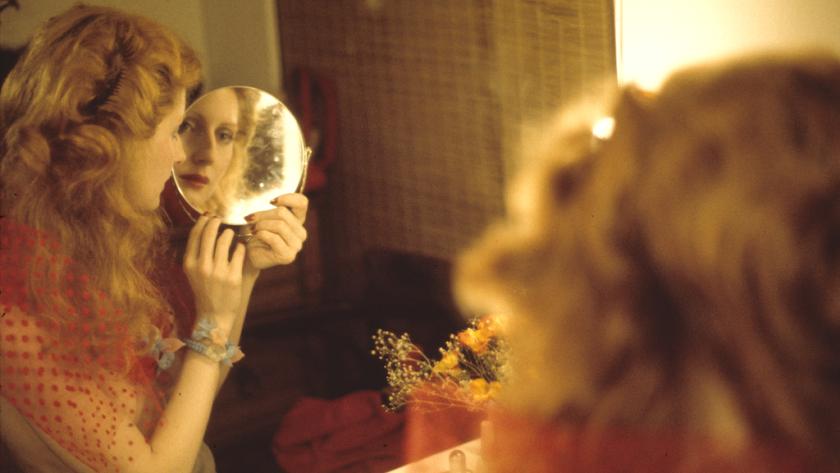When it was published in 1976, “The Hite Report” caused such a sensation that it was translated into 19 languages and flew off the shelves in 36 countries to become the 30th best selling book of all time. Yet it’s author, Shere Hite was treated as Public Enemy Number One.
Her crime? To reveal truths about female sexuality that American men didn’t want to hear. So they conspired to vilify and silence her. They were so successful in their mission and her fall from grace so complete that, fast forward 20 odd years, and not a single New York publisher would give her a book deal.
Nicole Newnham’s superb documentary charts the dramatic rise and fall of this brave woman who optimistically remarked that “equality doesn’t seem dangerous to me.” How wrong can you be! It was a case of blaming the messenger for unwelcome news. Hite was accused of making millions by criticising men when, in fact, her report was based on questionnaires sent out to women all over the United States.
Three thousand replied anonymously to questions such as “How do you masturbate?” ‘What other sexual activities cause you to have orgasm?” and “Do you prefer sex with men, women, either, or yourself?” Their answers sent shock waves through American society. Ninety-five per cent reported faking orgasm and the majority said they orgasmed from clitoral stimulation rather than intercourse.
“Our whole idea of sex must be reevaluated,” Hite concluded. “We’ve been adapting out bodies to male sexuality for centuries, so now we have to see ourselves for ourselves...The majority of women know how to masturbate and to orgasm easily with great pleasure… Masturbation is a cause for celebration.”
At first the media coverage was positive; audiences found it titillating to hear forbidden words like vagina and clitoris aired on TV, especially by a young and beautiful woman. The backlash soon came, though, from men who felt threatened by revelations implying ineptitude in the love making department.
 Hite’s chat show appearances make for compelling viewing. As cool as a cucumber, she delivers lines that must have made producers wince. It’s hard to tell if she’s being naive or deliberately provocative, but either way, her remarks are met with increasing hostility.
Hite’s chat show appearances make for compelling viewing. As cool as a cucumber, she delivers lines that must have made producers wince. It’s hard to tell if she’s being naive or deliberately provocative, but either way, her remarks are met with increasing hostility.
Five years on she published “The Hite Report on Male Sexuality” based on a survey in which she asked men about their feelings. Back came a sad picture of loneliness with recipients describing having no one to talk to or confide in. And the shit hit the fan. Dubbed “The Hate Report”, the book was dismissed as “one woman’s erotic fantasy”. No way were American men ready to admit to being needy, and on a chat show we see square jawed hunks denouncing the respondents as pathetic wimps.
Then someone discovered that Hite paid her way through Columbia University by modelling. The media seized on the news as evidence of her moral turpitude and unreliability as a researcher – “proof” that her findings were flawed.
But we are treated to some wonderful visuals. There she is cuddling up to Sean Connery on a poster for the Bond film “Diamonds Are Forever”, and again in a spread for “Playboy” magazine. With her mane of strawberry blond curls, she looks like a cross between a Botticelli angel and a Pre-Raphaelite vamp. And you can’t help falling in love with her.
Ironically, her introduction to the women’s movement came from appearing in an ad for Olivetti typewriters in the early 1970s. The catch phrase “A typewriter that’s so smart she doesn’t have to be” sparked huge protests. Shere Hite joined the angry women picketing the Olivetti corporation; she was invited to consciousness raising groups and immediately felt at home. “It was like a light switched on in a dark room”, she recalled. “The movement’s intellectual debates made Columbia University’s look pale and anaemic.” The shyness she encountered when asking women about their sexual preferences sparked the idea of devising a questionnaire to which people could respond anonymously.
Her next book “Women and Love” was the last straw. Published in 1988, it contained even more unpalatable revelations. Only 13 per cent of respondents said they still loved their husbands after two years of marriage and 70 per cent reported having extra marital affairs. Such findings threatened the very foundations of American society. Hite was pilloried in the press and we see her on the Oprah Winfrey Show surrounded by a sea of angry men.
 Supplementing this wealth of material – which is seemlessly stitched together by editor Eileen Meyer – are interviews with friends and colleagues that help flesh out the woman behind the television appearances. And extracts from Hite’s writings read by Dakota Johnson, who miraculously matches her intonation and tonality, reveal the toll that the negative publicity was taking.
Supplementing this wealth of material – which is seemlessly stitched together by editor Eileen Meyer – are interviews with friends and colleagues that help flesh out the woman behind the television appearances. And extracts from Hite’s writings read by Dakota Johnson, who miraculously matches her intonation and tonality, reveal the toll that the negative publicity was taking.
And in 1994 she upped sticks and left New York for Germany with her husband Friedrich Höricke. There she met the photographer Iris Brosch and began collaborating with her on a series of portraits and nudes. Hite saw it as an opportunity to express her sexuality for herself rather than for male viewers – to reclaim the female nude. And we are treated to a grand finale of stunning images of this courageous and charismatic woman.
Newnham has won numerous awards for films such as “Crip Camp”, and “The Disappearance of Shere Hite” deserves to hoover up many more. As well as being a portrait of a brave soul who dared to challenge the status quo, this excellent film offers a snapshot of the women’s movement of the 1970s. And it acts as a warning that history is repeating itself. Seeing a woman carrying a placard reading “Keep your laws off my body” – a message recently repeated outside the Supreme Court – is a stark reminder that the gains made by those women are systematically being eroded at this very moment.
It’s a sobering thought that if Shere Hite were writing in America today, her words would probably be met with violence as well as hostility.
- The Disappearance of Shere Hite is in cinemas from January 12th
- More film reviews on theartsdesk














Add comment